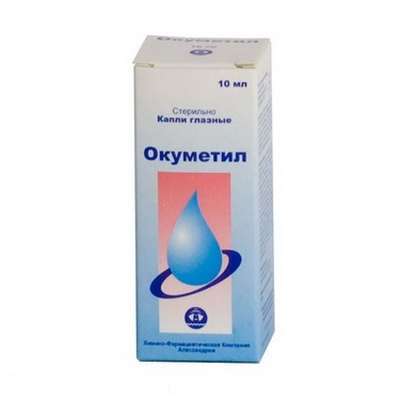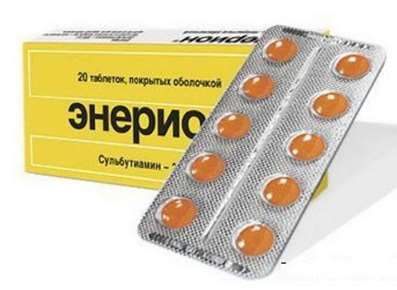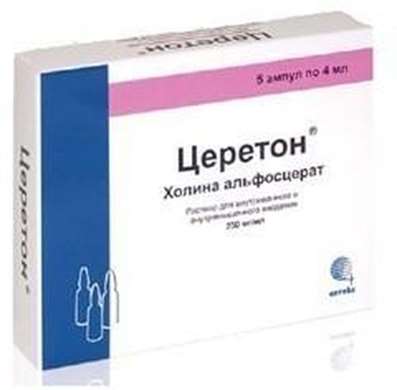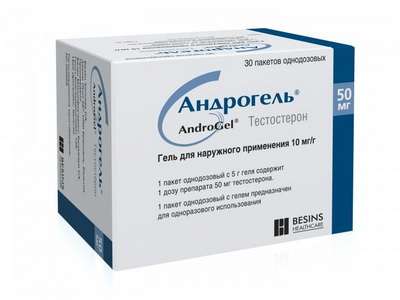Medicinal preparations with ephedrine
21 Dec 2016
TEOFEDRIN-N (THEOPHEDRIN-N)
Structure of one tablet:
- dense extract of a belladonna - 3 mg
- coffeine - 50 mg
- Paracetamolum - 200 mg
- Theophyllinum - 100 mg
- Fenobarbitalum - 20 mg
- Cytisinum - 100 mkg
- ephedrine a hydrochloride - 20 mg
Side effects:
- From cardiovascular system: in isolated cases - tachycardia, disturbances of a cordial rhythm.
- From a CNS: in isolated cases a hyperphrenia, a tremor, a headache, a sleep disorder, sleeplessness.
- From the alimentary system: in isolated cases - a loss of appetite, heartburn, nausea, vomiting.
- Others: in isolated cases - dryness in a mouth, the increased diaphoresis, ischuria, allergic reactions.
Contraindications:
- chronic heart failure;
- stenocardia;
- disturbance of a coronary circulation;
- disturbances of a rhythm of heart;
- angle-closure glaucoma;
- prostate hyperplasia;
- hyperthyroidism;
- arterial hypertension;
- epilepsy and other convulsive states;
- pregnancy;
- lactemia period;
- children's age up to 18 years;
- hypersensibility to the components entering drug.
With care use drug at a renal or liver failure, a diabetes mellitus, disturbances of an emiction, predilection to development of medicinal dependence.
Pharmacological action:
The combined drug, has bronchodilatory and spasmolytic effect. Bronchodilatory effect of drug is caused by a combination of derivatives of a methylxanthine (Theophyllinum, a coffeine) with simpatomimetiky ephedrine and in m cholinolytic Atropinum which is the main operating beginning of extract of a belladonna. Fenobarbitalum eliminates exaltation of a CNS. Drug enlarges a lumen of bronchi, dilates vessels of lungs and lowers pressure in a small circle of a circulation, stimulates the respiratory center, dilates coronary vessels and increases the frequency and force of cordial reductions, enlarges a renal blood stream and renders moderate diuretic effect. Due to presence at composition of drug of Teofedrin-N paracetamol possesses antipyretic and analgeziruyushchy action.
INSANOVIN (INSANOVIN)
Structure of one tablet:
- Prednisolonum - 1 mg
- Theophyllinum - 150 mg
- chloroquine Natrii phosphas - 40 mg
- ephedrine a hydrochloride - 25 mg
Side effects:
- From endocrine system: disturbances of a menstrual cycle, oppression of function of adrenals, an Icenco-Cushing syndrome, suppression of function of pituitary and adrenal system, depression of tolerance to carbohydrates, steroid Diabetum or a manifestation of a latent diabetes mellitus, retardation of body height at children, a delay of sexual development in children.
- From the alimentary system: nausea, vomiting, steroid stomach ulcer and duodenum, pancreatitis, esophagitis, bleedings and perforation of a GIT, rising or loss of appetite, meteorism, hiccup. In rare instances - rising of activity of hepatic transaminases and ShchF.
- From a metabolism: negative nitric balance because of a catabolism of proteins, the diaphoresis increased removal of a calcium from an organism, hypocalcemia, rising of body weight, increased.
- From cardiovascular system: potassium loss, a gipokaliyemichesky alkalosis, an arrhythmia, a bradycardia (up to a cardiac standstill); a steroid myopathy, a heart failure (development or intensifying of symptoms), changes on the ECG characteristic of a hypopotassemia, rising of the ABP, hypercoagulation, clottages. Patients with an acute myocardial infarction have a distribution of the center of a necrosis, retardation of formation of a cicatrical tissue that can lead to a rupture of a cardiac muscle.
- From a musculoskeletal system: retardation of body height and processes of ossification at children (premature closing of epiphyseal zones of body height), an osteoporosis (it is very rare - pathological fractures, an aseptic necrosis of a head humeral and a femur), a rupture of tendons of muscles, muscular delicacy, a steroid myopathy, decrease of muscle bulk (atrophy).
- From a CNS: headache, rising of intracranial pressure, delirium, disorientation, euphoria, hallucinations, maniac-depressive psychosis, depression, nervousness or concern, sleeplessness, giddiness, cerebellum pseudoneoplasm, convulsive attacks.
- From an organ of vision: a back subkapsulyarny cataract, rising of intraocular pressure (with possible injury of an optic nerve), trophic changes of a cornea, an exophthalmos, predilection to development of a secondary infection (bacterial, fungic, virus).
- Dermatologic reactions: petechias, ecchymomas, thinning and fragility of a skin, hyper-or hypopigmentation, acnes, striya, predilection to development of a pyoderma and candidiases.
- The reactions caused by immunodepressive action: retardation of processes of neogenesis, depression of fastness to infections.
- At parenteral administration: in isolated cases anaphylactic and allergic reactions, hyper-or a hypopigmentation, an atrophy of a skin and a hypodermic fat, an exacerbation after intrasinovialny use, an arthropathy like Sharko, sterile abscesses, at introduction to the centers on the head a blindness.
Contraindications:
With care to apply at parasitic and infectious diseases of the virus, fungic or bacterial nature (now or recently postponed, including recent contact to the patient) - the herpes simplex surrounding a herp (a viremichesky phase), the chicken pox, measles, the amebiasis, a strongyloidosis (established or suspected), systemic mycosis; active and latent tuberculosis. Use at serious infectious diseases is admissible only against the background of specific therapy.
With care to apply within 8 weeks to and 2 weeks after bacterination, at a lymphadenitis after BTsZh inoculation, at immunodeficiency (including AIDS or HIV contamination).
With care to apply at gastrointestinal diseases: a peptic ulcer of a stomach and a duodenum, an esophagitis, gastritis, an acute or latent round ulcer, recently framed intestine anastomosis, a nonspecific ulcerative colitis with threat of perforation or abscessing, a diverticulitis.
With care to apply at diseases of cardiovascular system, including after recently postponed myocardial infarction (at patients with an acute and subacute myocardial infarction distribution of the center of a necrosis, retardation of formation of a cicatrical tissue and thereof a rupture of a cardiac muscle is possible), at a dekompensirovanny chronic heart failure, arterial hypertension, a lipidemia), at endocrine diseases - a diabetes mellitus (including disturbance of tolerance to carbohydrates), a thyrotoxicosis, a hypothyrosis, Itsenko-Cushing's illness, at a serious chronic renal and/or liver failure, a nefrourolitiaza, at the hypoalbuminemia and states contributing to its emergence at a systemic osteoporosis, a myasthenia, acute psychosis, an obesity (the III-IV degree), at a poliomyelitis (except for a form of a bulbar encephalitis), open and angle-closure glaucoma.
Pharmacological action:
GKS. Suppresses functions of leucocytes and fabric macrophages. Limits migration of leucocytes to the area of an inflammation. Breaks ability of macrophages to phagocytosis, and also to education interleykina-1. Stabilization is promoted by the lizosomalnykh of membranes, reducing thereby concentration of proteolytic enzymes in the field of an inflammation. Reduces the permeability of capillaries caused by release of Histaminum. Suppresses activity of fibroblasts and formation of a collagen. Inhibits activity of a phospholipase of A2 that leads to suppression of synthesis of Prostaglandinums and leykotriyen. Suppresses release of TsOG (mainly TsOG-2) that also promotes decrease of development of Prostaglandinums. Reduces number of the circulating lymphocytes (T-and B-cells), monocytes, eosinocytes and basophiles owing to their movement from a vascular bed to an adenoid tissue; suppresses formation of antibodies. Prednisolonum suppresses release by a pituitary body of AKTG and a β-lipotropin, but doesn't reduce the level of the circulating β-endorphine.......... Oppresses secretion of TTG and FSG. At immediate application renders vasopressor effect on vessels. Prednisolonum possesses the expressed action on a metabolism of carbohydrates, proteins and fats. Stimulates a gluconeogenesis, promotes capture of amino acids a liver and kidneys and increases activity of enzymes of gluconeogenesis. In a liver Prednisolonum strengthens deposition of a glycogen, stimulating activity of glikogensintetaza and synthesis of glucose from products of protein metabolism. Rising of maintenance of a glucose in a blood activates release of insulin.Prednisolonum suppresses capture of glucose fatty cells that leads to activation of lipolysis. However owing to augmentation of secretion of insulin there is a stimulation of lipogenesis that promotes fat accumulation. Has catabolic effect in an adenoid and connecting tissue, muscles, fatty tissue, a skin, a bone tissue. To a lesser extent than Hidrocortizonum, influences processes of water and electrolytic exchange: promotes removal of potassium ions and a calcium, a delay in an organism of ions of sodium and water. The osteoporosis and an Icenco-Cushing syndrome are the main factors limiting long therapy of GKS. As a result of catabolic action suppression of body height at children is possible. In high doses Prednisolonum can increase excitability of tissues of a brain and promotes reduction of the threshold of convulsive readiness. Stimulates excess production of the hydrochloric acid and Pepsinum in a stomach that leads to development of a round ulcer. At systemic use therapeutic activity of Prednisolonum is caused by antiinflammatory, antiallergic, immunodepressive and anti-proliferative action. At external and topical administration therapeutic activity of Prednisolonum is caused antiinflammatory, antiallergic and anti-exudative (thanks to vasopressor effect) by action. In comparison with Hidrocortizonum antiinflammatory activity of Prednisolonum is 4 times more, mineralokortikoidny activity is 0.6 times less. You can try Kristagen.
BRONKHOLITIN SAGE (BRONCHOLYTIN-SALVAE) Syrup (125 ml)
125 g of syrup contain:
- glautsina of hydrobromidum of 0.125 g
- ephedrine of a hydrochloride of 0.100 g
- oils of a sage of 0.125 g
- Saccharum of 43.750 g
- citric acid of 0.075 g
- ascorbic acid of 0.050 g
- nipagin 0.1625 g
- nipayual 0.025 g
- water purified 125 g
Side effects:
- Allergic reactions
- Side effects are result, mainly, of effect of ephedrine:
- Rising of arterial pressure
- Heartbeat
- The increased nervous excitability
- Sleeplessness
- Sweating
- Difficulty of an emiction
- Oppression of an intestinal peristalsis
- Mydriasis
- Reduces appetite
- At children a sleepiness is possible
Contraindications:
- Hypersensibility to components Bronkholin sage
- Coronary heart disease
- Coronary atherosclerosis
- Pheochromocytoma
- Glaucoma
- Diabetes mellitus
- Hyperthyroidism
- Prostate adenoma
- Sleeplessness
- Pregnancy
- Lactemia period
Pharmacological action:
Bronkholin a sage syrup represents the combined drug with antibechic and bronchodilatory action. Glautsina hydrobromidum has overwhelming effect on kashlevy the center, without influencing respiration. Possesses both weak bronkhospazmolitichesky and sekretolitichesky action. Ephedrine - a sympathomimetic agent, excites respiration, dilates bronchi and reduces an edema of their mucosa. Oil of a sage has antiinflammatory and weak antimicrobic effect.
BRONKHITUSEN VRAMED (BRONCHITUSSEN ® VRAMED) Syrup (125 ml)
5 ml of syrup contain:
- glautsina hydrobromidum of 5 mg
- ephedrine hydrochloride of 4 mg
- Excipients: oil of a basil, citric acid an anhydrase, sucrose, methylparahydroxybenzoas, propilparahydrocsibenzoat, polysorbate 80, ethanol of 96% (1.7 about. %), the water purified.
Side effects:
Drug raises the CARDIAC CONTRACTIONS RATE and the ABP, oppresses an intestinal peristalsis, dilates pupils, stimulates a CNS (mental and motive concern), reduces appetite. At children a sleepiness is possible.
Contraindications:
- hypersensibility to medicine components;
- stenocardia;
- atherosclerosis;
- heart failure;
- arterial hypertension;
- arrhythmias;
- glaucoma;
- diabetes mellitus;
- thyrotoxicosis;
- prostate adenoma;
- sleeplessness;
- pregnancy;
- lactemia period
Pharmacological action:
Medicine with bronkholitic action. Glautsin is anti caught central acting agent, oppresses kashlevy the center, but has no the oppressing effect on the respiratory center. Ephedrine simpatomimetic means, has effect, reduces puffiness of a mucous membrane of the top airways. Essential oil of a basil possesses easy sedative and antiseptic action, oppresses caught reflex.
Syrup (125 ml) [to Govern] BRONHOTON (BRONCHOTON)
125 g of syrup contain:
- glautsina hydrobromide – 0.125 g
- efedrinahydrochlorid – 0.100 g
- basil oil ordinary - 0,125 g
5 ml of syrup contain:
glautsina hydrobromide - 5 mg
ephedrine a hydrochloride - 4 mg
oil of a basil ordinary - 5 mg
Excipients: lemon acid, sucrose, methylparahydroxybenzoate, parahydroxybenzoate, the twin 80, ethanol of 96%, water spent on drink.
Side effects: Bronkhoton is usually not bad had by patients. In certain cases during therapy development of the undesirable effects caused glautsiny and ephedrine was noted including:
From heart and vessels: arrhythmia, violation of warm conductivity, arterial hypertension.
From the central nervous system: tremor of extremities, violation of the mode of a dream and wakefulness, dizziness, headache.
From digestive tract: nausea, vomiting, loss of appetite, violation of a chair.
From an urinary system: violation of an urination. Mainly at the patients suffering a good-quality giperplaziy prostate gland the urine delay was noted.
Allergic reactions: skin itch, small tortoiseshell, bronchospasm.
Others: decrease in visual acuity, expansion of a pupil, perspiration, decrease libido, painful periods, takhifilaksia.
Contraindications:
Bronkhoton don't prescribe to patients with individual sensitivity to ephedrine, a glautsin, and also additional substances of drug.
Bronkhoton isn't recommended to prescribe to persons with an intolerance of fructose, malabsorption of a glyukozo-galactose, and also deficiency of sakharozo-isomaltose.
Drug isn't prescribed to the patients having coronary heart disease, arterial hypertension, an arrhythmia, a heart failure, and also atherosclerotic lesions of coronary vessels.
Bronkhoton don't apply to therapy of patients with a pheochromocytoma, a diabetes mellitus, glaucoma, prostate adenoma, a hyperthyroidism, and also sleeplessness.
Syrup isn't prescribed to children 3 years, and also to pregnant women and the feeding women is younger.
It is necessary to be careful at purpose of drug to patients who are inclined to development of medicamental dependence, and also patients with epilepsy, a liver failure and alcoholism.
Patients of advanced age and persons whose work requires special attention should take with caution drug Bronkhoton.
Pharmacological action:
Bronkhoton is a complex antibechic drug having also bronchodilatory and antiseptic activity. Active components of drug of glautsin hydrobromidum and ephedrine a hydrochloride have complex effect at diseases of respiratory system which are followed by unproductive tussis and obstruction of bronchi. Glautsina hydrobromidum – the alkaloid having effect it is immediate on center. Glautsin in therapeutic doses doesn't oppress the respiratory center. Besides, it has some spasmolytic effect on a smooth musculation of bronchi and has some adrenolytic activity. Ephedrine is alpha and beta adrenomimetic agent having the direct effect on receptors and also having indirect adrenomimetichesky activity due to ability to oppress activity of aminoxidase. Ephedrine stimulates release of an adrenaline and Noradrenalinum, reduces the raised tonus of a smooth muscle layer of bronchi, and facilitates respiration due to expansion of a lumen of bronchi. Bronkhoton facilitates expectoration due to action. The basil oil which is a part of drug Bronkhoton has the antiinflammatory, antiseptic and anesthetizing activity, and also some sedation. The peak of plasma concentration of glautsin after oral administration is reached within 1,5 hours. Active components are partially metabolized in a liver, removed by kidneys. The elimination half-life of ephedrine makes about 3-6 hours.
Syrup (125 ml) BRONHOTsIN (BRONCHOCIN ®)
5 ml of syrup contain:
- glautsina hydrobromidum of 5.75 mg
- ephedrine hydrochloride of 4.6 mg
- oil of a basil of 5.75 mg
Excipients: citric acid, Saccharum, polysorbate 80, methylparahydroxybenzoas, propilparahydrocsibenzoat, ethanol (1.2%), the water distilled (1.2%).
Side effects:
- From cardiovascular system: arterial hypertension, heartbeat.
- From a CNS: hyperexcitability, mydriasis.
- Others: sweating, difficulty of an emiction, loss of appetite.
Contraindications:
- coronary heart disease;
- hyperthyroidism;
- children's age up to 3 years;
- hypersensibility to drug components.
Pharmacological action:
Combined drug with antibechic and broncholitic action. Bronkhotsin makes combined effect on respiratory system and a CNS. Glautsin suppresses kashlevy the center, without influencing respiration. Possesses weak broncholitic and expectorant action. Ephedrine is adrenomimetic indirect action, excites respiration, renders broncholitic effect, reduces an edema of a mucosa of a bronchial tree. Oil of basil renders the antiinflammatory, anesthetizing and weak antiseptic action.

 Cart
Cart





